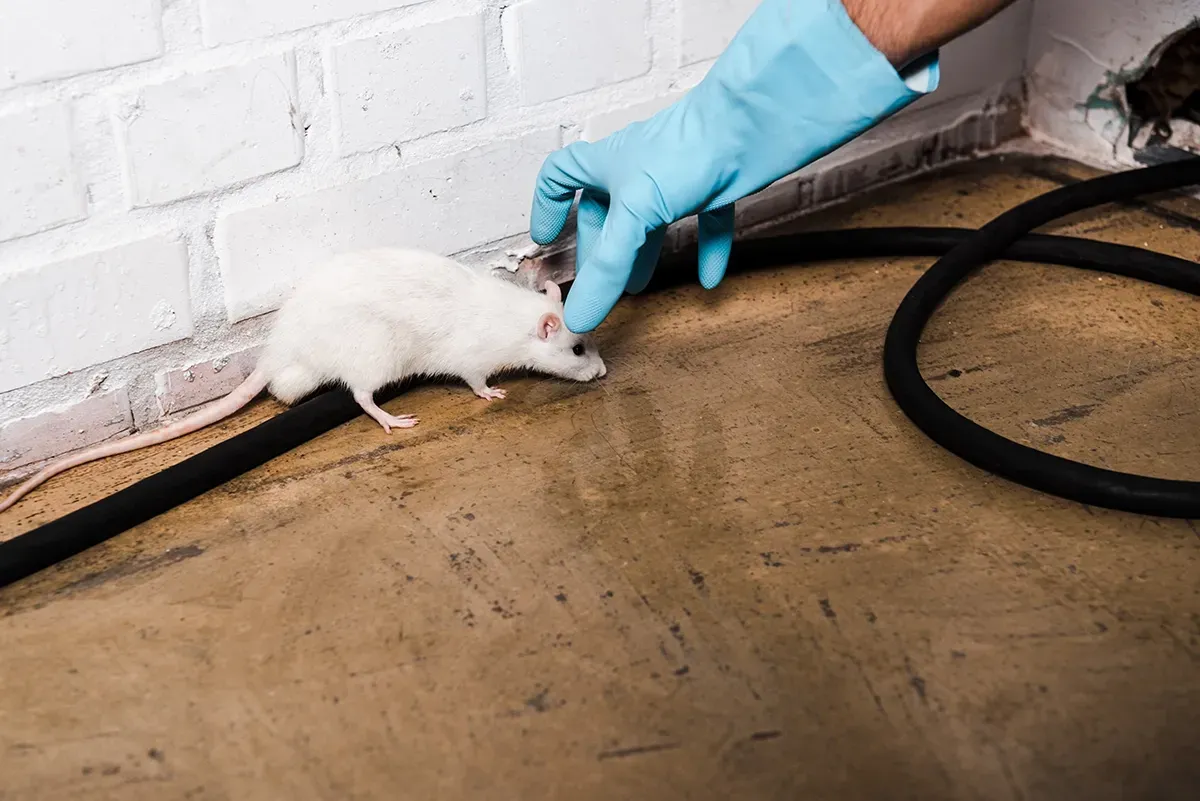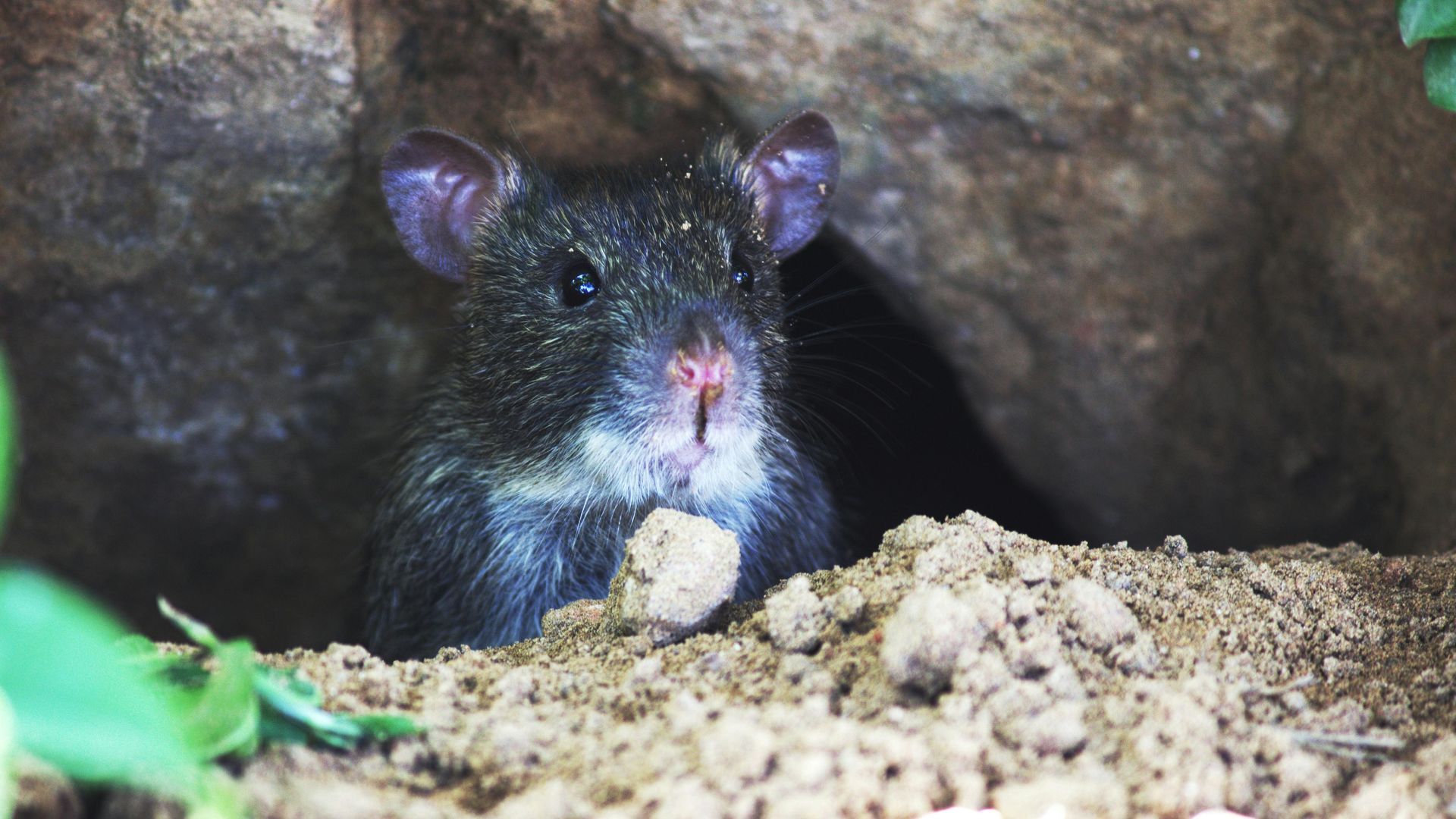Rats
Rats can be a homeowner's nightmare, causing property damage by chewing through wires and insulation, and posing health risks by spreading diseases like leptospirosis and salmonella. They often enter homes through gaps in walls or foundations and quickly multiply, turning small issues into large infestations. Homeowners can prevent rat problems with proper sanitation, securing food sources, and sealing entry points. When infestations occur, professional rat control services are crucial to protect both health and property.

If you have any questions, here are a few of the frequently asked questions.
As a homeowner, it's natural to have questions when dealing with a potential rat problem. Rats can cause significant damage to your home and pose health risks, so understanding how to prevent, identify, and eliminate them is crucial.
To help you feel more informed and prepared, we've compiled a list of frequently asked questions about rats, covering everything from how to detect an infestation to the best prevention methods.
Whether you're dealing with an active problem or want to protect your home, these FAQs provide the essential information every homeowner should know.
1.How can I tell if I have a rat infestation?
Signs include droppings, gnaw marks, nesting materials, unusual pet behavior, and hearing scratching or scurrying noises in walls or ceilings.
2. What attracts rats to my home?
Rats are attracted to food, water, and shelter. Unsecured trash, pet food, compost, and clutter can attract them, as well as small entry points like cracks and gaps.
3. Are rats dangerous to humans and pets?
Yes, rats can carry diseases like leptospirosis, hantavirus, and salmonella, and they can also cause property damage by gnawing on wires and wood. They can also trigger allergies and asthma.
4. How can I prevent a rat infestation?
Seal entry points, keep your home clean, store food in airtight containers, manage trash properly, and eliminate standing water sources.
5. What should I do if I see a rat during the day?
Seeing a rat during the day could indicate a large infestation, as they are typically nocturnal. Contact a professional pest control service immediately.
6. What is the best way to get rid of rats?
A combination of traps, baits, exclusion methods, and professional pest control services is usually the most effective approach.
7. How quickly can rats multiply?
Rats reproduce rapidly, with a single pair capable of producing hundreds of offspring in a year. Females can have up to six litters per year, with an average of 8-12 pups per litter.
8. Are DIY rat control methods effective?
DIY methods like traps and baits can be somewhat effective, but they often don’t address the root cause of the problem or prevent future infestations. Professional help is usually more effective.
9. Can rats cause damage to my property?
Yes, rats can cause significant damage by chewing through electrical wiring, insulation, and wood structures. This can increase the risk of fires and structural damage.
10. What are the signs of a rat infestation outside my home?
Signs include burrows near foundations, gnaw marks on outdoor objects, rat runs or tracks, and droppings around garbage cans or pet food storage areas.
Understanding the Various Types of rats in your Household

1. Norway Rat (Rattus norvegicus)
- Other Names: Brown rat, sewer rat, street rat, common rat.
- Appearance: Large and robust, with a blunt nose, small ears, and a thick body. They have a brownish-gray fur with a lighter underside. Adults typically weigh between 12-18 ounces.
- Size: Body length ranges from 7-9.5 inches, with a shorter tail than their body, usually 6-8 inches.
- Habitat: Prefers lower levels of buildings, basements, ground floors, and burrows in the ground or along foundations. They are excellent diggers and often build complex burrow systems.
- Behavior: Nocturnal and less agile climbers compared to roof rats. They are strong swimmers and are often found in sewers, garbage dumps, and lower parts of buildings.
2. Roof Rat (Rattus rattus)
- Other Names: Black rat, ship rat, house rat.
- Appearance: Sleeker and more slender than the Norway rat, with a pointed nose, large ears, and a longer tail that is typically longer than their body. They usually have black or dark brown fur with a lighter underside.
- Size: Body length ranges from 6-8 inches, with a tail length of 7-10 inches.
- Habitat: Prefers higher areas of buildings, such as attics, roofs, rafters, and trees. They are agile climbers and are often found nesting above ground in dense vegetation or trees near homes.
- Behavior: Nocturnal, excellent climbers, and more cautious than Norway rats. They tend to forage for food in higher places like kitchen counters and upper cabinets.
3. Woodrat (Neotoma spp.)
Also known as pack rats, they are generally found in rural areas and have a habit of collecting shiny objects and nesting materials. They are less common in urban homes.
Differences in Behavior and Habitat Preferences:
- Norway rats tend to occupy lower spaces, burrowing in the ground or basements. They are more common in cooler climates and often near water sources like sewers.
- Roof rats prefer elevated spaces and are more common in warmer coastal areas. They are frequently found in attics, trees, and upper stories of buildings.
Other Less Common Rats in Homes:
- Marsh Rice Rat (Oryzomys palustris): Found in marshy areas, these are less likely to invade homes but can be found in certain coastal regions.
It is important to identifying the type of rat in your home for effective pest control. Is crucial species haveerent behaviors and habitat preferences, making this knowledge essential.
Rat control services for a hassle-free experience.
At GetLocal Services, our platform's transparent pest control pricing eliminates the need for price shopping. Our system provides you with the best price based on the experience and qualifications of our thoroughly vetted exterminators.
Our professional network members undergo a rigorous vetting process to ensure they meet our high standards. This guarantees that you receive top-quality service at a fair price, making your experience with us completely hassle-free.
Avoiding Annoying Sales Calls
One significant advantage of using GetLocal Services is avoiding the annoyance of multiple sales calls from vendors vying for your business.
Once you select an exterminator through our platform, you won’t be bombarded with follow-up calls from other vendors. This ensures a stress-free experience, allowing you to easily focus on resolving your ant problem.
If you need rat extermination, our professionals are available in your area.
If you’re facing a rat infestation, our local exterminators are here to help. We specialize in treating the specific types of rats in your area, using effective methods to eliminate the problem and prevent future issues. Contact us today to schedule an inspection and keep your home rat-free.
DELAWARE
FLORIDA
GEORGIA
NEW JERSEY
PENNSYLVANIA
NORTH CAROLINA

Money-Back Guarantee!
Unhappy with the service? We'll send another provider. Still unsatisfied? Our money-back guarantee will make it right.
GetLocal Hassle-Free Home Services









